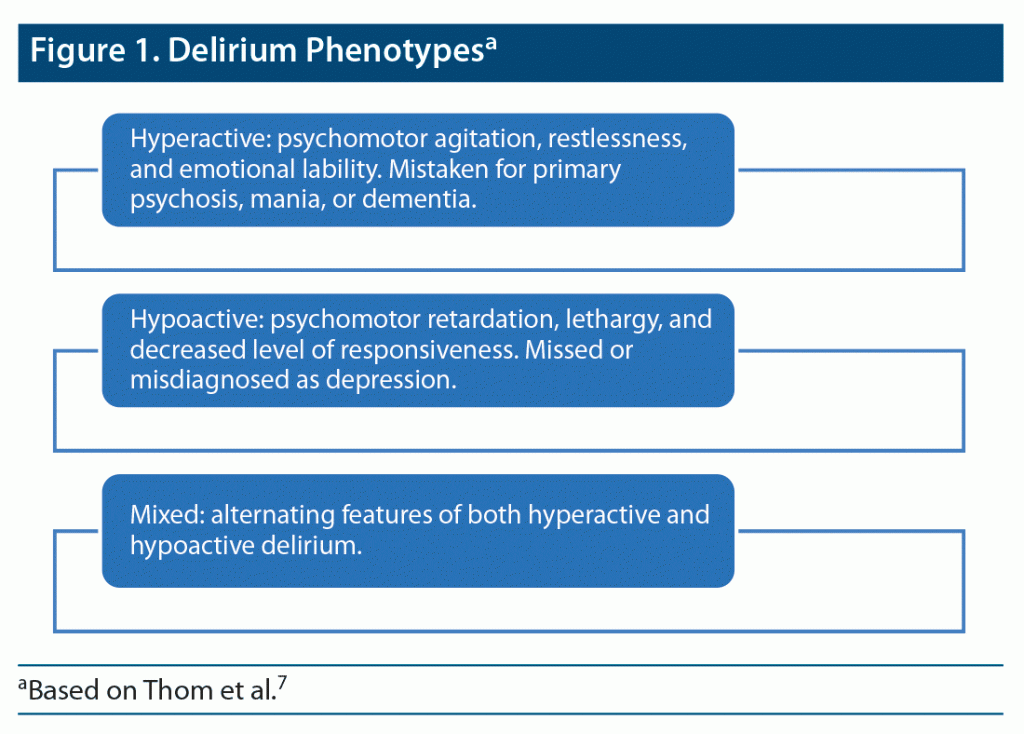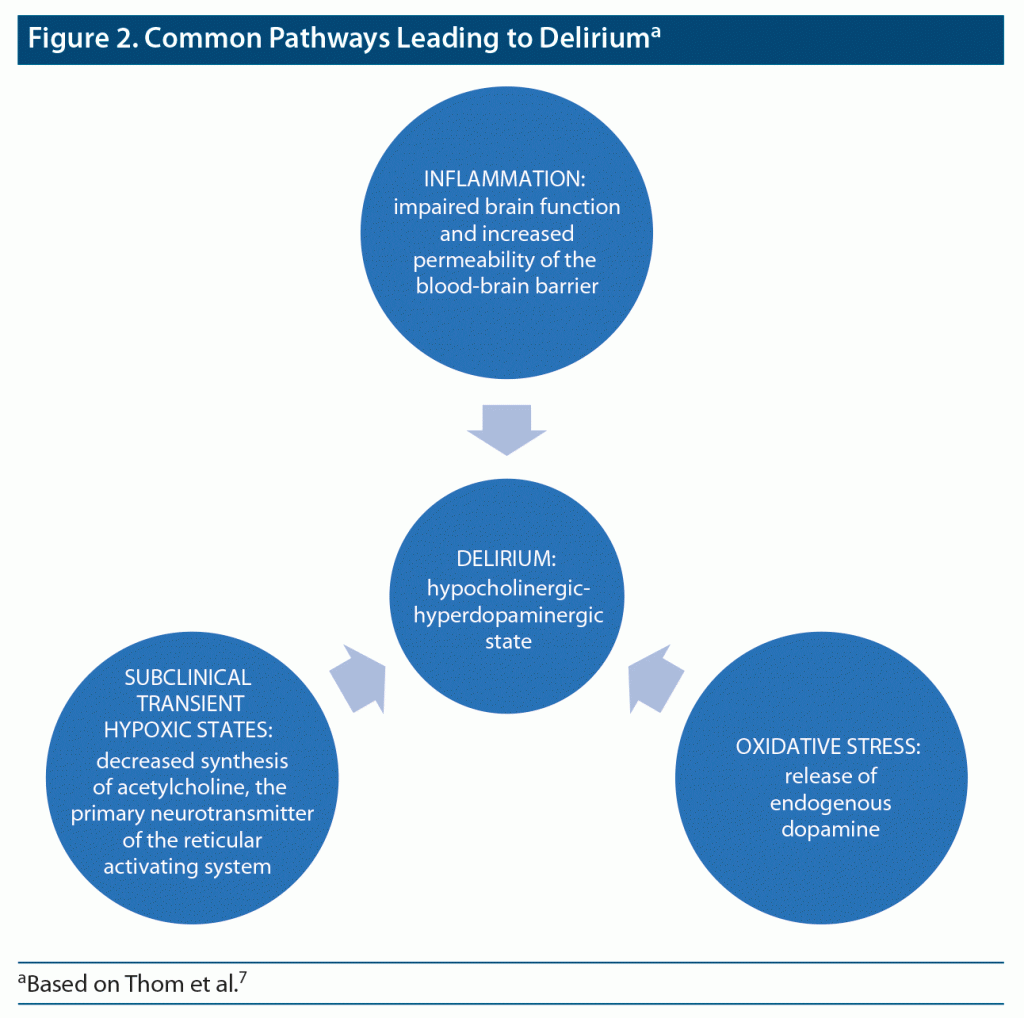
Prim Care Companion CNS Disord 2022;24(3):21cr03055
To cite: Memon RI, Lee-Rodgers A, Wasilewski AD. Beta-blocker–induced perceptual change and behavior. Prim Care Companion CNS Disord. 2022;24(3):21cr03055.
To share: https://doi.org/10.4088/PCC.21cr03055
© Copyright 2022 Physicians Postgraduate Press, Inc.
aDepartment of Psychiatry and Behavioral Sciences, Baylor College of Medicine, Houston, Texas
bDepartment of Psychiatry, Henry Ford Allegiance Health, Jackson, Michigan
*Corresponding author: Raheel I. Memon, MD, Department of Psychiatry and Behavioral Sciences, Baylor College of Medicine, One Baylor Plaza, MS350, 1977 Butler Blvd, Ste E4.400, Houston, TX 77030 ([email protected]).
β-blockers are generally well-tolerated and are commonly used for management of hypertension, congestive heart failure, tremors, and performance anxiety. However, even at clinical doses, they have a causal relationship with neuropsychiatric side effects including sedation, psychosis, and delirium, which have been reported within the elderly population and have a 14% prevalence in those over age 85 years.1–5
Delirium is a representation of global brain dysfunction leading to variable cognitive impairments in several domains including memory, orientation, language, visuospatial ability, and perception. Additional manifestations include psychomotor disturbance, altered sleep cycle, and emotional variability. Cognitive deficits in delirium, including attention, awareness, and cognition, develop over a short period of time and vacillate frequently.4
Preexisting dementia increases the risk of delirium by 5-fold. Severe medical illness, age, sensory impairment, and male sex further increase the risk.6,7 The elderly population is most vulnerable to delirium, as advanced age is one of its most important risk factors. Delirium has a prevalence of 10%–22% at admission and 10%–38% during hospital stay. In 10%–30% cases, it is secondary to medications.2 Untreated, delirium can last for weeks to months and prolongs medical hospitalization and associated costs.4,8
β-blocker metabolism and side effect profile are partially dependent on drug metabolism. Lipophilic β-blockers, including metoprolol, have long half-lives and undergo hepatic metabolism. These agents penetrate the blood-brain barrier and cause more central neurologic side effects than those that are hydrophilic.6 We present a case wherein the patient’s delirium presentation was likely related to metoprolol.
Case Report
The patient was a 78-year-old White man with past medical history of hyperlipidemia, hypertension, transient ischemic attack, and prostate cancer (in remission) who presented for evaluation of the following: memory impairment and word-finding difficulty of several months with acute increasing agitation and confusion of 2 days duration, anger spells soon after awakening (with resolution by the afternoon), and distrust of his spouse with suspicion of infidelity for 3 days duration. At presentation, the patient was cooperative with the examination. His vital signs were blood pressure: 140/80 mm Hg, heart rate: 44 beats/minute, and oxygen saturation: 99% on room air. Head computed tomography and magnetic resonance imaging of the brain were negative for acute process. Laboratory values were within normal limits and included prostate-specific antigen of 0.3 ng/mL and negative blood alcohol and urine drug screen.
The psychiatry department was consulted for “acute delirium with delusions and signs of depression.” The patient’s home medications, for which he reported compliance, included the following: allopurinol 100 mg/d, amlodipine 10 mg/d, lisinopril 20 mg/d, metoprolol tartrate 25 mg twice/d, omeprazole 20 mg in the morning, and pravastatin 10 mg/d. Psychosocial stressors included the anniversary of the death of his son, financial instability, and relationship strain with his wife as they had not been intimate in 5 years. During his admission, metoprolol, which has a half-life of 7 hours, was withheld secondary to bradycardia. The patient returned to baseline 92 hours following medication hold. Metoprolol was then discontinued at discharge.
Discussion
According to the DSM-5,9 the diagnosis of delirium involves disturbance in attention and awareness that develops over a short period of time and fluctuates throughout the day accompanied by a disturbance in cognition (including disorientation or perceptual disturbance). With multiple phenotypes, diagnosis may be challenging (Figure 1). The psychopathology of delirium pathophysiology has been described as secondary to diffuse reversible impairment of cerebral oxidative metabolism and neurotransmission and, often, acetylcholine deficiency or dopamine excess, while other neurotransmitters including norepinephrine, serotonin, and γ-aminobutyric also play a role.
Other proposed neurobiological mechanisms include action on centrally located β-adrenoceptors and inhibition of serotonin (5-HT) receptors and nonspecific membrane stabilization.1,2 In short, delirium is a hypocholinergic-hyperdopaminergic state, which is the result of multiple common pathways (Figure 2).
In cases of β-blocker–induced delirium, central nervous system (CNS) side effects are not dose dependent, and even low clinical doses may increase the risk of delirium.3 They often occur immediately before or after sleep, as reported by our patient, likely due to β-blocker–induced decrease in melatonin secretion and resulting change in sleep cycle. β-blocker–induced CNS side effects are dependent on the intrinsic lipophilic nature of β-blockers as previously discussed, increases in plasma catecholamine levels, and decreased melatonin levels.3 Elderly patients have age-related changes in the brain with small variations in perfusion pressure and decreases in hepatic metabolism secondary to decreased hepatic mass and blood flow.10 Additionally, they have an increase in total body fat resulting in an increase in volume of distribution, accumulation, and half-lives of fat-soluble drugs, all of which further increase risk of delirium.2 All lipophilic β-blockers, including metoprolol, are metabolized by cytochrome (CYP) 2D6, and homozygous carriers of the CYP2D6 genotype are at 4 times the risk of side effects including bradycardia and hypotension, which may increase risk of CNS side effects in this patient population.1 Therefore, hydrophilic β-blocking medications, including atenolol and nadolol, may be safer alternatives within the elderly population.
Conclusion
β-blockers are frequently used to manage common health conditions, including hypertension, anxiety, congestive heart failure, and essential tremor, and can contribute to overall risk of delirium in hospitalized patients, particularly within the elderly population. Therefore, it is important to be mindful and use caution when prescribing β-blocking medications in those with increased risk for delirium, particularly regarding solubility, as β-blockers that are lipophilic, including metoprolol, are more likely to result in complications in elderly patients. As an alternative, β-blocker medications that are hydrophilic, including atenolol and nadolol, may be used.
Published online: June 2, 2022.
Relevant financial relationships: None.
Funding/support: None.
Previous presentation: This case report was presented as a poster presentation at the 12th Annual Muslim Mental Health Conference; July 2020; Chicago, Illinois.
Patient consent: Consent was received from the patient to publish the case report, and information has been de-identified to protect anonymity.
References (10)

- Rietveld L, van der Hoek T, van Beek MH, et al. Familial liability for metoprolol-induced psychosis. Gen Hosp Psychiatry. 2015;37(6):620.e5–620.e6. PubMed CrossRef
- Fisher AA, Davis M, Jeffery I. Acute delirium induced by metoprolol. Cardiovasc Drugs Ther. 2002;16(2):161–165. PubMed CrossRef
- Aikoye SA, Jafferany M, Osuagwu V, et al. The man who saw things on carvedilol. Tokai J Exp Clin Med. 2019;44(2):29–30. PubMed
- Kukreja D, Günther U, Popp J. Delirium in the elderly: current problems with increasing geriatric age. Indian J Med Res. 2015;142(6):655–662. PubMed CrossRef
- Afshar S, Marcellus K, El-Mallakh RS. Suvorexant: an option for preventing delirium? Curr Psychiatr. 2021;20(2):7–8. CrossRef
- Gorre F, Vandekerckhove H. Beta-blockers: focus on mechanism of action. which beta-blocker, when and why? Acta Cardiol. 2010;65(5):565–570. PubMed CrossRef
- Thom RP, Levy-Carrick NC, Bui M, et al. Delirium. Am J Psychiatry. 2019;176(10):785–793. PubMed CrossRef
- Mattoo SK, Grover S, Gupta N. Delirium in general practice. Indian J Med Res. 2010;131:387–398. PubMed
- European Delirium & American Delirium Society. The DSM-5 criteria, level of arousal and delirium diagnosis: inclusiveness is safer. BMC Medicine. 2014;12:141.
- Goldner JA. Metoprolol-induced visual hallucinations: a case series. J Med Case Reports. 2012;6:65. PubMed CrossRef
Enjoy free PDF downloads as part of your membership!
Save
Cite
Advertisement
GAM ID: sidebar-top






